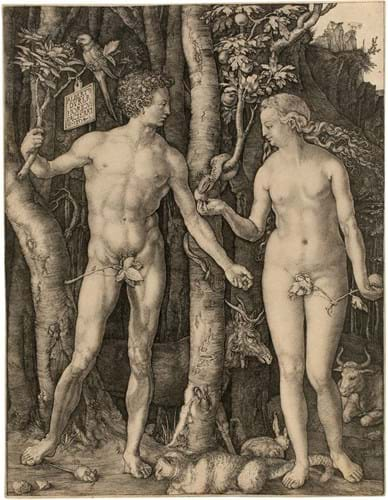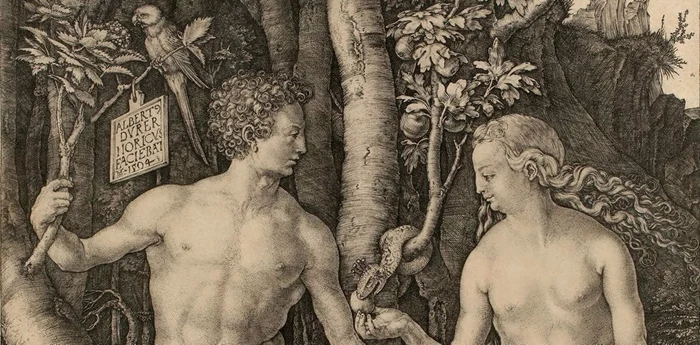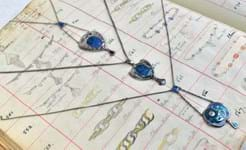
A towering achievement of northern Renaissance printmaking now overfamiliar from numerous reproductions, Adam and Eve was made in 1504 as something of a ‘calling card’ ahead of Dürer’s second visit to Venice.
He took an unusual amount of care in its creation and chose to sign it boldly with his full name and birthplace.
A tablet hanging from the mountain ash branch that Adam holds in his right hand reads Albert Dvrer Noricvs Faciebat 1504.
The original 10 x 7½in (25 x 19cm) copper engravings from this period are the most admired – and not just for reasons of art historical snobbery. Printing blocks or plates wear quickly, causing lines to lose their depth and hold less ink, so the earlier the Old Master print, the closer it will be to what the artist intended.
Dürer’s engravings have been studied, copied and adored for the better part of 500 years. Most will today be catalogued with a reference to Joseph Meder whose detailed catalogue raisonné, published in 1932, did much to categorise the artist’s prints by state and sub-state.
The example of Adam and Eve offered by Grisebach in Berlin on July 9 is the third state (or Meder 3a) made within the artist’s lifetime. The paper includes the large bull’s head watermark common to most Dürer prints made before c.1520.
This copy was described as superbly preserved with a strong, clear and rich image.

A detail of 'The Fall of Man (Adam and Eve)', a print by Albrecht Dürer, 1504 that sold for €430,000 (£390,000) at Grisebach.
Once part of the collection of Friedrich Quiring (b.1886) of Eberswalde, it came for sale from a vendor whose descendant had bought it from Düsseldorf prints and drawings dealership CG Boerner in 1960.
A number of lifetime copies of Adam and Eve (Meder 3a and Meder 2a) have previously sold for prices north of £100,000. However, this one, estimated at €80,000-120,000, sold at €430,000 (£390,000) or €537,500 including 25% buyer’s premium.
According to 'Artprice by Artmarket', this represents a new high for a copy of the print, exceeding two sold at Christie’s in the last decade: one for $550,000 (£349,500) in New York (January 2013) and another at £340,000 in London (July 2011).
It also stands as the second-highest sum at auction for any Dürer print, only behind a copy of his famous 1515 woodcut The Rhinoceros that fetched $720,000 (£457,550) again in January 2013 in New York.
At Grisebach, the same British buyer successfully bid €255,000 (£231,800) for a fine example of Dürer’s Melencolia I of 1514 (Meder 2a) that had been in a German private collection for over 80 years.














